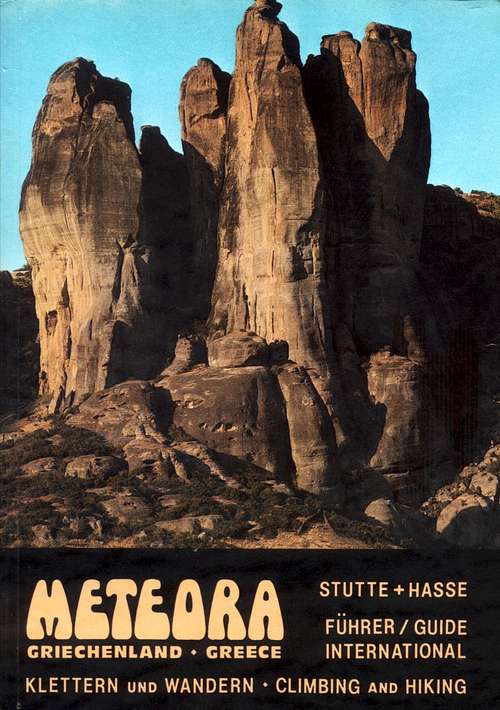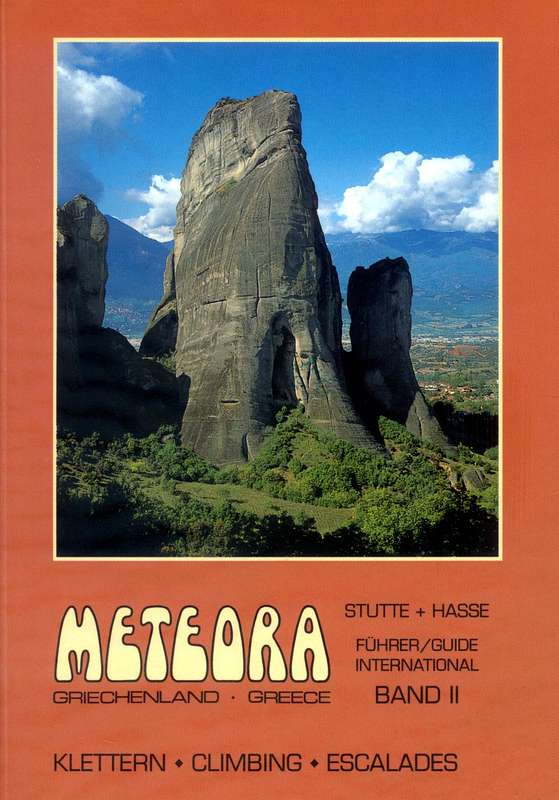-
 3079 Hits
3079 Hits
-
 84.27% Score
84.27% Score
-
 18 Votes
18 Votes
|
|
Mountain/Rock |
|---|---|
|
|
39.70997°N / 21.61633°E |
|
|
Thessaly |
|
|
Trad Climbing |
|
|
Spring, Fall |
|
|
1640 ft / 500 m |
|
|
Overview
Ambaria
Meteora (Μετέωρα), not a name of a single rock formation, actually it's an area, a charming and suggestive climbing site located in the Thessaly region of Greece, including about 170 summits of various shapes and types, as rocky pinnacles, spires, some of which are truly amazing and bizarre, minor peaks and also a few massive mountains. The towers overlook the village of Kastràki and the town of Kalambàka and feature some hundred of multi-pitch and single pitch routes. The towers of Meteora are quite famous all over the world, due to their singularity and a bit of mistery surrounding the place. The whole region is divided into several groups with more than 670 climbing routes.
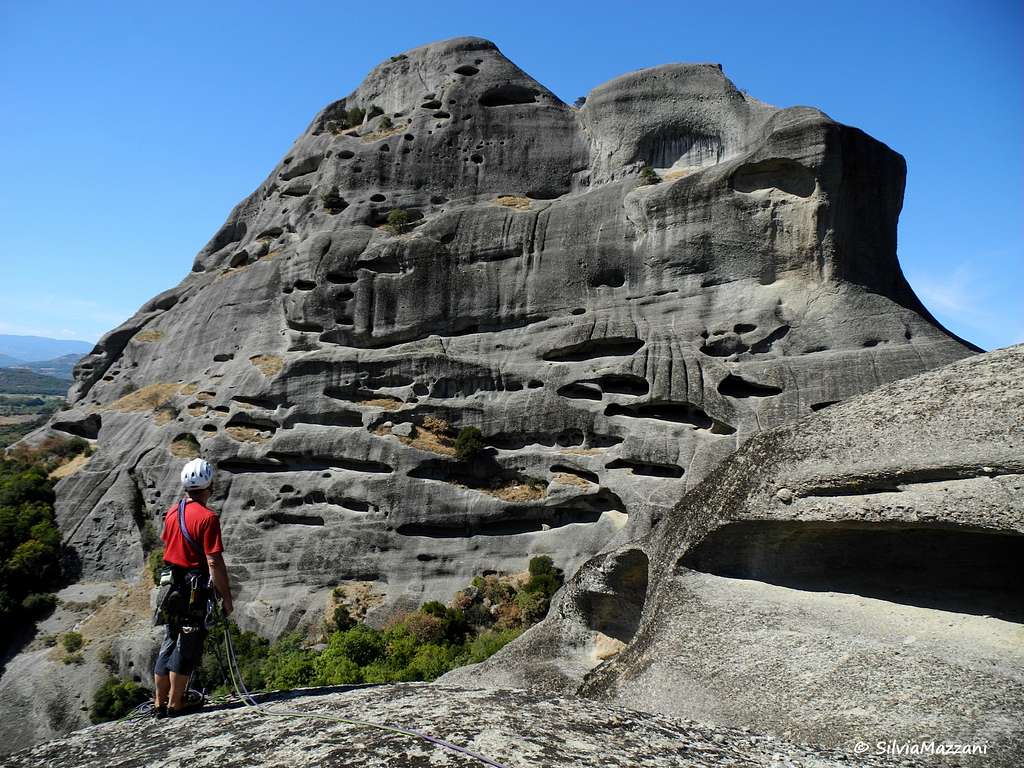
In the Southern group, close to the town of Kalambàka, it's located the tower named Ambaria, a massive structure to the right-hand side of the road joining Kastraki from Kalabaka. It's one of the one of most attended peaks of Meteora, thanks to the ease of access and the presence of several low-difficulty climbing routes. In fact Ambaria has nearly 20 trad and sport routes which vary in difficulty from to The "Sudwestkante" is one of the most frequently climbed routes in Meteora.
Getting There
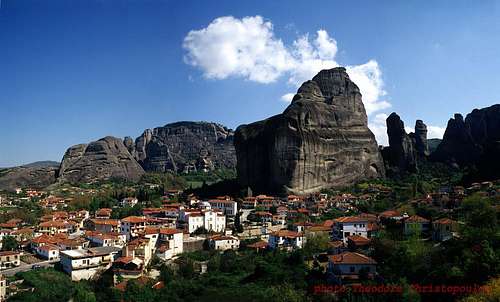
Meteora is situated in the Thessaly region of Greece, Northern half of Greece, approximately 25 km NNW from Trikala, and immediately North of Kalambaka and Kastraki, the two main towns in the area, both located very close to the rocks. The closest main town is Larissa. The distance to Kalambaka is about 360 km from Athens and 237 km. from Thessaloníki.
By plane - Meteora can be approached from Athens Eleftherios Venizelos airport or from Thessaloniki airport. From these airports you can:
- take a domestic flight to Larissa (about 85 km from Kalambaka)
- rent a car, useful once you are in Kastraki, but not essential
- use public transports (bus or train). Getting to Meteora without a car is easy thanks to the train from Athens that stops in Kalambaka.
By ferry from Italy – If you wish to travel with your own car, there are different shipping companies and many ferries departures to Igoumenitza from the harbours of Ancona, Bari and Brindisi.
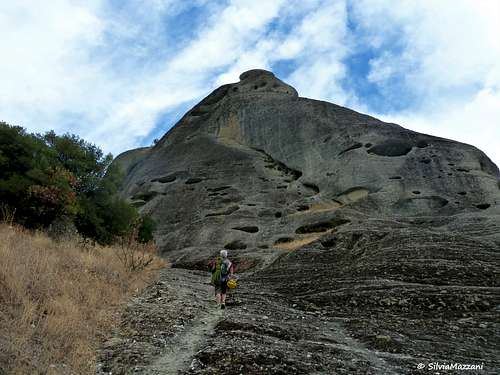
Walking approach
Ambaria is quite easily and briefly approached from the road joining Kalambàka and Kastraki which passes just in front. Coming from Kalambàka you reach a pass where the road begins to descend towards Kastraki. Here leave the car and start climbing to the right along a small road that leads to a slope. After climbing the slope briefly, you will find yourself at the base of the South face. (5 min from the parking lot).
Routes
South wall
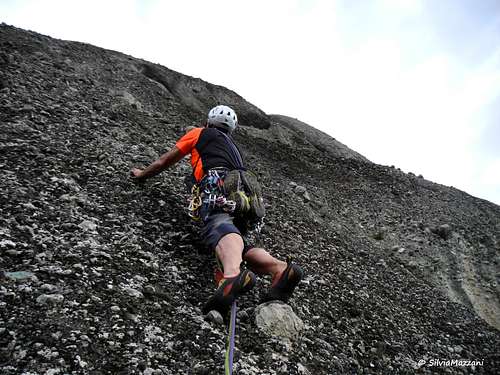
- Südwestkante (South West ridge) 5b max, 160 m. - L1 5b / L2 3a / L3 4c /L4 2a
- Südwand-Diagonale Tunnelvariante (South Wall Diagonale Tunnel Variation) 4c max, 250 m. - L1 3a / L2 2a / L3 3a/ L4 3a / L5 3c / L6 4b / L7 4c
- Direkte Südwand 6a max, 175 m
- Über den Hexenhals (Over the Witch Neck) 5c max, 260 m.
- Schildkrotenpfad (Turtles path) 4c max, 200 m
- Nixenhauge (Siren Eye) 5c max, 135 m. - L1 4a / L2 5c / L3 5b / L4 5a / L5 I
- Schnecklwand (Snail Wall) 5a max, 130 m. - L1 4a / L2 4c / L3 4b / L4 4b / L5 I
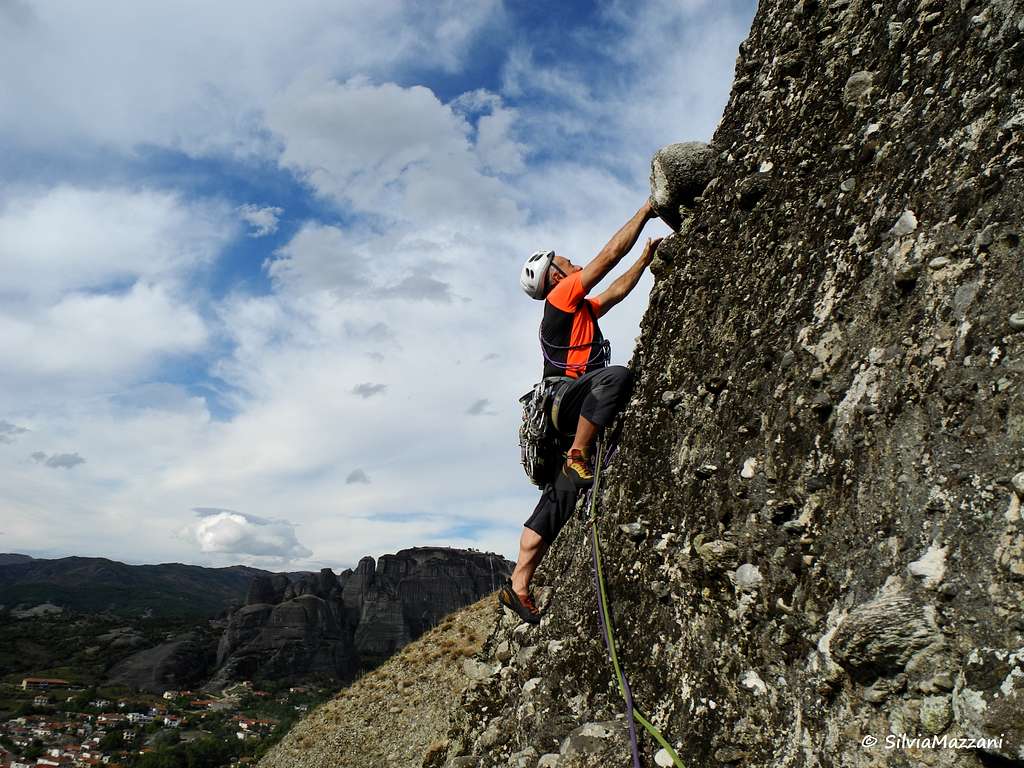
Red Tape
No fees and no permits required. However, there are rules to be respected. Remember not to climb on rock formations with inhabited monasteries. In the Seventies Dietrich Hasse and his team decided, in agreement with local authorities, not to climb any route on these latter rock formations. This rule applies even today. Please preserve all other historical remains. Another important suggestion is not to add fixed protections on the classic routes to the pre-existing ones. If you plan to visit the monasteries, keep in mind to be appropriately dressed: men cannot wear shorts, while women must wear long skirts and not trousers, arms must be covered. Since the year 1988 Meteora was declared UNESCO World Heritage Site. More info: Meteora Unesco World Heritage Site .
Rock climbing and geology
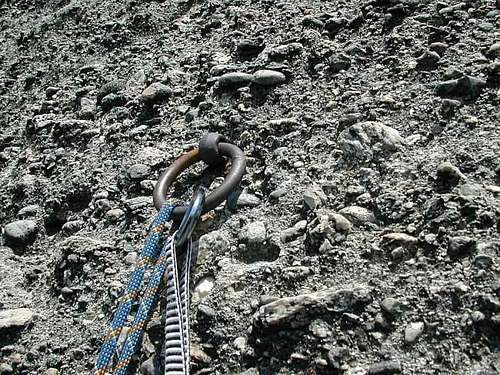
Traditionally, Meteora was in great parts explored by climbers from Sächsische Schweiz. Basically Meteora is not a place for lovers of sport climbing, but in recent times more equipped and sporty routes have also been opened. The pegs on the trad routes up to 5c / 6a is rather economical. It is also necessary to pay some attention to the positioning of the pegs, as they are of a color that tends to blend in with the rock. The texture of Meteora rock results from a mix of pebbles, cobbles and larger stones, packed into a rock surface which is a mixture of conglomerate and sandstone. Sometimes the cobbles have come out from the rock to leave shallow holes in their place. The rock is predominantly solid and reliable. What emerges is a peculiar climbing style, mainly slabby and balancy on cobbles, consisting in exploiting small or large pebbles protruding, or otherwise the holes remained where the same pebbles were formerly located. As soon as you get used to it, the climb will provide fun and generally little tiring.
Climbing history
Since the Seventies a group of German climbers, in primis the physicist Dietrich Hasse and the photographer Heinz Lothar Stutte, began to explore the mountain range and climbed almost all the most important summits, with the exception of the towers on which lie the monasteries. Currently, only six monasteries are inhabited.
The first explorers background from Sächsische Schweiz explains the reason of their climbing style by using only very few protections and with a very rigorous ethic. The same climbers realized two climbing guides of the area.
When to climb
Virtually you could climb all year round (snowfalls are rare), with the warning that summer is really very hot and in winter the temperatures may be unpleasant, unless you are very lucky. The best months are late March, April, May, September, October and November.
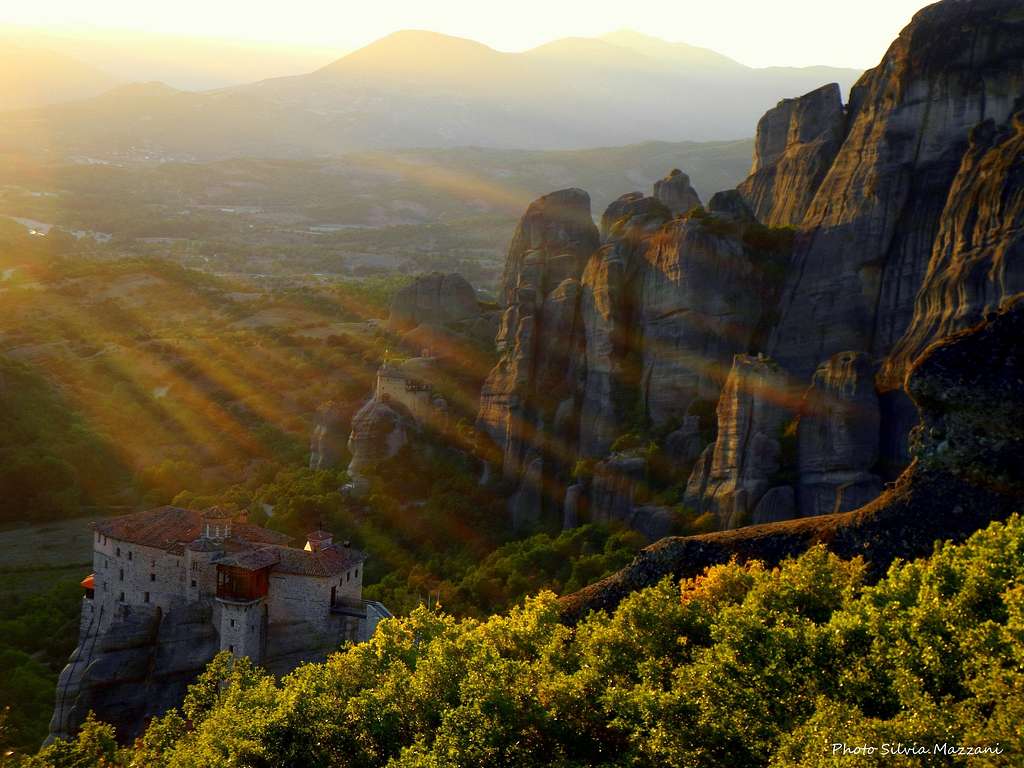
Accomodation
Both in Kastraki and Kalambaka there are a great number of hotel rooms, B&Bs and rooms to rent. There are also three organized campsites, amongst which the nearest one to the crags is the Camping Vrachos in Kastraki. There is also a smaller campsite near the tower of Doupiani. There are also plenty of eating out options, particularly tasty traditional Greek food and pizzerias.
Meteo
External Links
Guidebooks and maps
|
Meteora
Heinz Lothar Stutte - Dietrich Hasse
Climbing and hiking guidebook I edition 1986 - German and English
The basic guidebook to climb and hike in Meteora
|
|
|
Meteora
Heinz Lothar Stutte - Dietrich Hasse
Climbing guidebook II edition 2000 - II edition not a complete guidebook, but an update to the I edition - German, Greek and English
ISBN3-922066-05-4
|
There are two useful guidebooks to consult:
“Meteora – Climbing and hiking” by Dietrich Hasse and Heinz Lothar Stutte - I edition 1986, in English and German. It contains around 230 routes. Also, it provides general information about mountaineering, hiking in Meteora, maps, directions.
“Meteora Climbing Part II” by the same Heinz Lothar Stutte and Dietrich Hasse – II edition 2000 – German, Greek and English - Note: the II edition is not a complete guidebook, but an update to the I edition
The Meteora guidebooks can be purchased in Kastraki, Taverna Paradisos or Camping Vrachos. There is also a useful map by the same authors that can be purchased in local shops in Kastraki.



